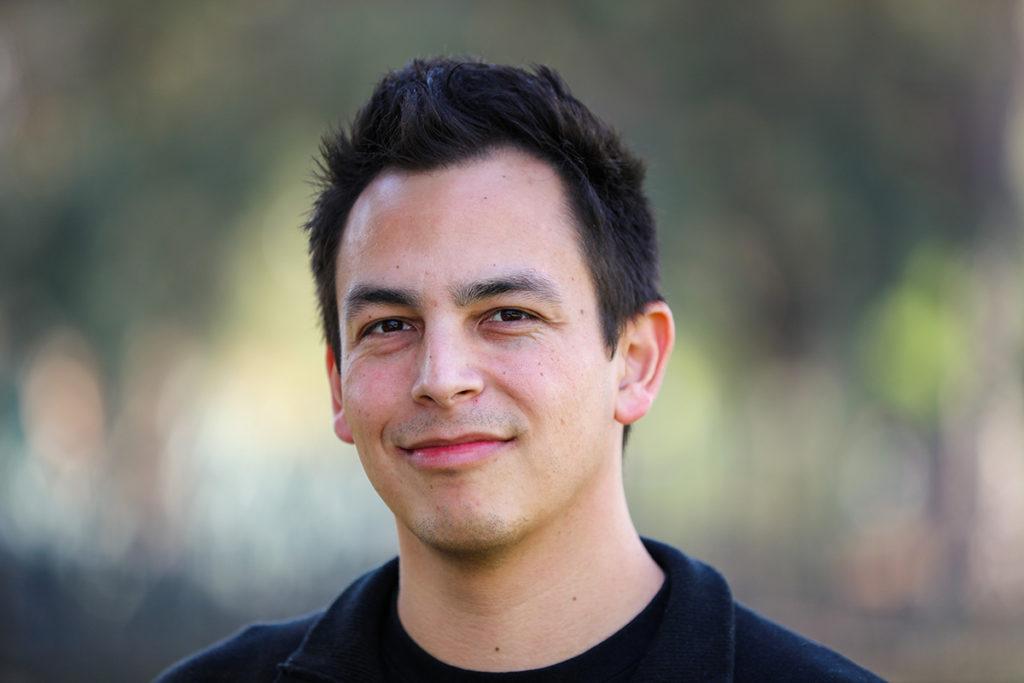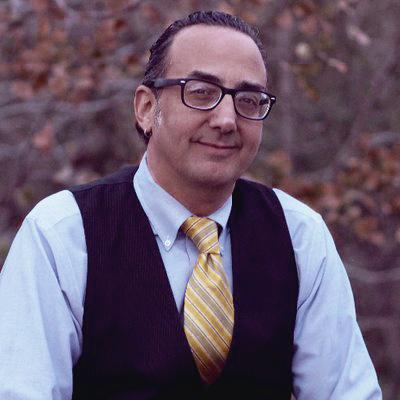Piron highlights several programs for Indigenous filmmakers to take advantage of in their quest in reaching an international film stage
Adam Piron, Kiowa and Six Nations Mohawk, has recently stepped into the shoes of longtime Sundance organizer N. Bird Runningwater. Piron has taken on the demanding role of Director of the Indigenous Program at the Sundance Institute.
According to the President and founder of the Sundance Institute and summarily the Sundance Film Festival, Robert Redford has long strived to engage and invest in Indigenous contributions to the organization.
According to a Sundance press announcement, “The Indigenous Program has built and sustained an Indigenous film circle, which now spans over four generations. The cycle of work begins by scouting for and identifying Indigenous artists, providing a year-round support system at Sundance Institute to get their work made and shown, and then bringing the filmmakers and their work back to Native lands.”
See related post: Adam Piron to lead Sundance Institute’s Indigenous Program
In addition to Sundance’s efforts to engage and uplift Indigenous filmmakers, the Native Lab has supported budding Indigenous filmmakers since 2004, there is also a Merata Mita and Full Circle Fellowships to further embed this outreach.
In a conversation with Adama Piron and Native Viewpoint’s Vincent Schilling, Piron outlined what he expected to bring to the proverbial table at Sundance all the while stepping into some big shoes to fill—previously worn by N.Bird Runningwater.
Vincent Schilling: How does it feel stepping into the shoes of N. Bird Runningwater? He was a champion for Sundance for a long time.
Adam Piron: It’s obviously big shoes to fill. But I feel like I’ve gotten plenty of preparation for it as well from Bird himself. I started with the program as an intern back in 2007. I worked pretty much in every sort of role up to this point. So I’ve got not just the training, and the knowledge and the legacy of the program — how it works — but also I think (I have a handle on) supporting artists in general and maintaining a community, and a network of all of our alumni as well.
I think that’s something that really distinguishes us from a lot of other programs or organizations out there. It feels good stepping into them, but because I’m not going into it cold, I’ve been working with the program in the institute, as well in the festival. So I know my way around. It’s great. It’s exciting.

Vincent Schilling: For informative sake, as well as people reading the article, what programs and opportunities does Sundance offer for inspiring Indigenous filmmakers?
Adam Piron: We have a number of different opportunities and different mechanisms for support. The next thing we have coming up is the Native lab, and that’s taken on a number of different forms over the years. Up until about two years ago, we were focused a bit more on short film production, but now we’re, where we’re doing feature film and episodic work.
————–
FROM THE SUNDANCE PAGE:
Native Filmmakers Lab
The Indigenous Program has built and sustained an Indigenous film circle, which now spans over three generations. The cycle of work begins by scouting for and identifying Indigenous artists, bringing them through the mechanisms of support at Sundance Institute to get their work made and shown, then bringing the filmmakers and their work back to native lands. The Native Filmmakers Lab has been a vital part of supporting indigenous filmmakers since 2004.
The lab focuses on the specific development of storytellers from Native and Indigenous backgrounds, encompassing feature film and episodic work. During the Lab, Fellows will hone their storytelling and technical skills in a hands-on and supportive environment, including one-on-one feedback sessions with advisors and roundtable discussions. With Fellows working across both feature and episodic formats, they will also explore and discuss indigenizing their creative practices in regard to writing their scripts.
You can also visit: https://www.sundance.org/programs/indigenous-program/
Adam Piron: (Continued) We also have our Full Circle Fellowship, which is funded by the Kellogg Foundation, so that specifically looks at working over the course of a year working with younger Indigenous folks, ages 18 to 24, from New Mexico, Michigan, and Mississippi, and really like sort of opening up doors for them, and helping them to explore career pathways into film.
FROM THE SUNDANCE PAGE:
Full Circle Fellowship
The Sundance Institute’s Indigenous Program aims to support the next generation of Indigenous American storytellers through the Full Circle Fellowship, which provides opportunities for three fellows to explore a career as a filmmaker, such as:
- Attendance at the 2022 Sundance Film Festival*
- A set internship at the Native Lab to gain hands-on film production experience*
- A trip to Los Angeles with a schedule of production facilities tours, meetings with industry mentors, and film screenings.*
- Mentorship from the Indigenous Program staff.
Eligibility: This fellowship is open to Native youth ages 18-24 based in the United States, from communities in Michigan, New Mexico, and Mississippi.
Location: TBD
Dates: May 2021 – July 2022 (TBD)
Apply: The application period is now closed. Please check back next February for more information.
Application Requirements: *In-person gatherings pending. There is no application fee. If you have additional questions, please contact indigenous_program@sundance.org.
Adam Piron: (Continued) We also have our Merata Mita Fellowship, which is named in honor of Merata Mita, who was also a previous artistic director of our lab, and is also considered the the first Indigenous woman director to have directed a film solely on her own. And that one’s also opened up internationally, that opportunity is for women directors that are looking to make their first feature film.
Merata Mita Fellowship
The Sundance Institute Merata Mita Fellowship for Indigenous Artists pays tribute to the immense artistic contributions and memory of Merata Mita (Ngāti Pikiao/Ngāi Te Rangi). Merata served as an advisor and artistic director to Sundance Institute’s Native Filmmakers Lab from 2000 to 2009, where she mentored and developed some of the top Indigenous talent in today’s film industry. In her time as a screenwriter and director herself, she is the first—and only—Māori woman to write and direct a dramatic feature film.
This fellowship serves to continue Merata Mita’s legacy and to cultivate a stage for other Indigenous women around the world to tell their stories. Fellows will be awarded cash grants and a yearlong continuum of support with activities, including a trip to the Sundance Film Festival, access to strategic and creative services offered by Sundance Institute artist programs, and mentorship opportunities.
Eligibility: Indigenous artists who identify as women and are endeavoring to direct a feature film.
Apply: The application is now open. Apply HERE.
Deadline: Monday, October 11, 2021 3:30 P.M. PACIFIC/4:30 P.M. MOUNTAIN/6:30 P.M. EASTERN
Notification Date: Mid-December 2021
*Dates/Location: TBD January 2022, Sundance Film Festival – Park City, UT
Application Requirements: *In-person gatherings pending. There is no application fee. If you have additional questions, please contact indigenous_program@sundance.org.
————
Vincent Schilling: The industry sure has changed in the past several years.
Adam Piron: Yes. I think also, the pandemic accelerated a lot of the changes it is going through now. To figure out the next phase so to speak and I think a lot of Indigenous folks have been able to figure that out. They have managed to have their own narrative sovereignty.
It’s totally great to have ambition, but don’t necessarily think that you have to be making the next blockbuster with your first film, I think there’s a lot of other roads for Indigenous people in film. Some people want to make more personal art-related films or stuff that’s a bit more experimental. I think that it’s important to also create a space for Indigenous artists like that as well.
Vincent Schilling: Stepping into your new role. What do you, Adam, envision for Sundance? What would you like to see?
Adam Piron: I think we’re at a really interesting or some sort of, like a blossoming. A lot of Indigenous people are making work again, both in the more mainstream, commercial, kind of blockbuster level, and then also people doing stuff on the art side as well. There’s a lot happening. And this didn’t exist five years ago.
I think we’re in a really good space. There’s still a ton of work to be done from just the representation angle, but I think it’s at a point now where I think people can start making work on their own terms, to a certain extent. Pushing for that a lot more. People are in positions of power to open doors to make a lot of this work happen.
Did you enjoy this story without ads?
Native Viewpoint does not use ads on its website and articles to allow readers the ability to enjoy the story without distractions. If you enjoy reading this and other articles, please support and donate to Native Viewpoint by clicking here.

Vincent Schilling, Akwesasne Mohawk, is the founder and editor of Native Viewpoint. With nearly 20 years of experience as a Native journalist and former member of the White House Press Pool, Vincent works to uplift underrepresented voices in the world of media and beyond. Follow Vincent on YouTube.com/VinceSchilling, on Twitter at @VinceSchilling or on any other of his social media accounts by clicking on any of the icons below.
Support Native Viewpoint a Native multimedia website, by clicking here.